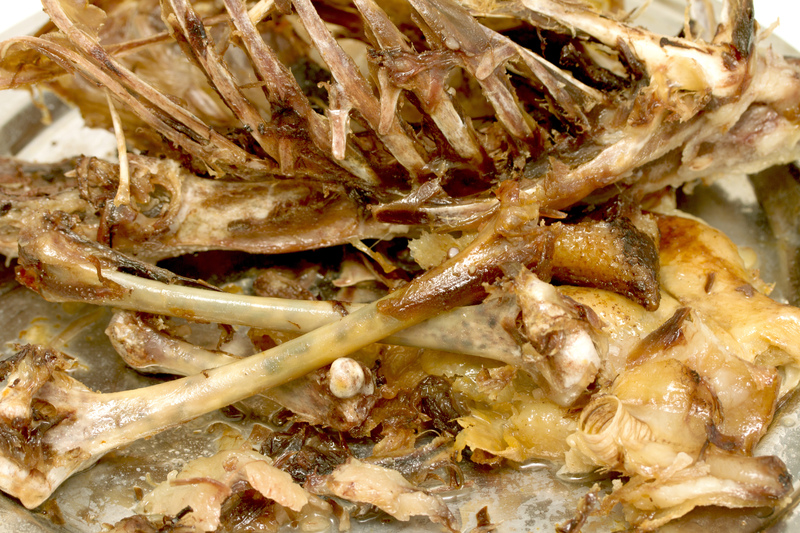Breathing New Life into Old Pots with Recycling Techniques
Posted on 06/09/2025
Breathing New Life into Old Pots with Recycling Techniques
Are your old plant pots piling up in the garden shed, gathering dust? With modern recycling techniques, it's easier than ever to give those tired, unused containers a second chance. Breathing new life into old pots not only reduces waste, but also enhances your garden and home. In this comprehensive guide, learn how to transform your aging pots, promote sustainability, and inject creativity into your gardening projects.

Why Recycle Old Pots?
We live in an age where sustainability and eco-consciousness matter more than ever. Many flowerpots, whether clay, ceramic, or plastic, end up in landfills each year, contributing to environmental pollution. Recycling techniques for old plant pots minimize waste and support responsible gardening. Here are a few compelling reasons to reconsider the destiny of your pots:
- Reduces landfill burden: Old pots are often not biodegradable, especially plastic ones.
- Lowers gardening costs: Re-purposing means fewer purchases for containers and planters.
- Promotes creativity and personalization: Each recycled pot can become a unique piece of garden art.
- Supports a circular economy: Recycling old materials keeps them in use and decreases resource extraction.
Understanding Different Types of Pots
Before diving into recycling techniques for old pots, it's crucial to recognize the different materials they're made from and the special considerations for each:
- Clay and Terracotta Pots: Porous, eco-friendly, but susceptible to cracking.
- Ceramic Pots: Glazed or unglazed, heavy, and often decorative.
- Plastic Pots: Lightweight, durable, but a major environmental concern if thrown away.
- Metal Pots: Trendy and durable, but may rust or corrode.
- Bamboo/Fiber Pots: Biodegradable and eco-friendly, but can deteriorate over time.
Recycling Techniques to Renew and Repurpose Old Pots
1. Cleaning and Restoring Old Garden Pots
Breathing fresh life into your outdated plant containers starts with thorough cleaning. Remove any caked-on soil, mineral deposits, and algae. For clay or terracotta, soak pots in a vinegar-water solution to dissolve build-up and scrub gently with a brush. For plastic pots, dish soap and water work wonders. This simple act instantly refreshes your containers and prepares them for new uses.
2. Upcycling Old Pots into Decorative Planters
Upcycling takes recycling to the next level, letting you transform unused pots into eye-catching decor. Here are creative upcycling ideas:
- Paint and Decorate: Use weather-resistant paints, stencils, or mosaic tiles to redesign surfaces.
- Decoupage: Glue colorful paper or fabric onto pots for a personalized touch.
- Wrap with Rope or Twine: For a rustic look, wrap pots with natural fibers.
- Stencil Names or Quotes: Add plant names or inspirational quotes to make your pots special.
With these techniques, your old plant pots can become statement pieces for your patio, balcony, or indoor spaces.
3. Creating Tiered Plant Stands
Stacking pots is a smart way to maximize limited gardening space. Select three or four pots in graduated sizes. Stack them upside-down and right-side-up alternately, securing with construction adhesive if necessary. Fill each with soil and cascading plants for a stunning vertical display. This technique is especially useful for small patios and can transform unused garden pots into focal points.
4. Turning Old Pots into Storage Containers
Plant containers aren't just for greenery! Repurpose old flowerpots as storage solutions:
- Desk Organizers: Smaller pots can hold pens, brushes, or crafting tools.
- Craft Supply Holders: Store threads, ribbons, or beads in decorative pots.
- Garden Tool Buckets: Large pots are ideal for holding hand tools, gloves, or seed packets.
Reuse not only saves money--it adds charm to your workspaces.
5. Creating Bird Baths or Feeders
Transform old terracotta pots into delightful bird baths or feeders. Simply invert a large pot, place a shallow ceramic saucer on top, and fill it with water or seeds. Decorate the base for extra visual interest. This sustainable recycling method invites more wildlife into your garden and gives old materials a useful, new function.
6. Crafting Miniature Fairy Gardens
Broken or chipped pots are perfect for fairy garden projects. Arrange shards to form terraces or steps inside a larger container. Add miniature plants, tiny furniture, and whimsical figurines. This fun recycling technique is great for families, sparking creativity while reusing worn pots that might otherwise be discarded.
Exploring Advanced Recycling and Upcycling Methods
Recycling Plastic Pots Responsibly
Plastic planters present the biggest environmental challenge. Fortunately, more municipalities and garden centers now offer designated recycling bins for clean, label-free plastic pots. Check with local stores such as Lowe's or Home Depot; many host collection points for recycled plant containers. Don't forget:
- Remove all dirt and residue.
- Separate trays and labels from pots.
- Only deposit pots marked with recycling symbols (typically numbers 2, 5).
This ensures plastics truly get processed and prevents contamination in recycling streams.
Using Old Pots in Garden Infrastructure
Beyond their decorative uses, old pots have practical applications:
- In-Ground Drainage: Place upturned clay pots at the bottom of planting holes or raised beds for improved drainage and aeration.
- Soil Amendments: Break unglazed pots into shards and scatter them in beds or pots to boost drainage, especially in heavy clay soils.
- Pathway Edging: Half-bury old, broken pots to edge walkways or garden paths for a cottage-style look.
Composting with Biodegradable Pots
Some fiber, paper, or peat pots are designed to break down in compost piles. Shred and compost them directly for a zero-waste cycle, returning nutrients to your soil while keeping the waste stream clean.
Safety and Preparation Tips for Recycling and Upcycling Old Pots
- Wear gloves when handling broken ceramics or pots with sharp edges.
- Disinfect pots if reusing for plants--this prevents the transfer of pests and diseases. A mild bleach-water solution (1:10 ratio) is effective.
- Allow cleaned pots to dry completely before painting or decorating to ensure good adhesion.
- Choose paint or adhesives suitable for outdoor use for maximum durability, especially for pots kept outside.
Inspirational Ideas for Breathing New Life into Old Pots
Seasonal Displays
Paint and fill old containers with seasonal blooms. For autumn, consider mums and mini pumpkins; for spring, hyacinths and daffodils. Change arrangements throughout the year for ever-fresh outdoor accents.
Personalized Gifts
Hand-decorated, upcycled pots make thoughtful gifts. Consider adding a handwritten message or the recipient's favorite quote. Plant a cutting inside for a living gift with personal charm.
Educational Projects
Involve children in upcycling projects to nurture their creativity and environmental awareness. Let them paint pots, design fairy gardens, or learn about the recycling cycle through hands-on activities.
How Recycling Old Pots Benefits the Environment
- Reduces Waste: Every reused pot is one less in the landfill.
- Conserves Resources: Upcycling minimizes the need for new raw materials in pottery and plastic production.
- Lowers Carbon Footprint: Manufacturing and transporting new pots require more energy than reusing existing ones.
- Promotes a Greener Lifestyle: Each recycling project inspires more sustainable habits throughout your home and community.

Frequently Asked Questions
Can all types of pots be recycled or upcycled?
Most can be reused or repurposed, though some plastics may not be accepted in curbside recycling programs. Ceramic and terracotta are endlessly reusable, even when broken. Always check local recycling guidelines for plastics.
Is painting old pots safe for plants?
Yes, provided you use non-toxic, outdoor-rated paints and allow them to cure. Avoid painting the inside where roots and soil contact the surface.
How do I prevent mold or pests in reused pots?
Clean thoroughly and sanitize pots before planting. Proper drainage and air circulation further mitigate pest problems.
Conclusion: The Joy of Breathing Life into Old Pots
Recycling and upcycling old pots is both eco-friendly and creative. Whether you're a passionate gardener, DIY enthusiast, or simply looking to reduce household waste, there's a recycling technique for your unused or tired containers. By breathing new life into old pots, you'll save money, prompt your creativity, and help protect our planet.
Start today: Gather your forgotten pots, choose a project that inspires you, and celebrate the sustainable satisfaction of turning the old into something new and beautiful. The possibilities are as endless as your imagination!

